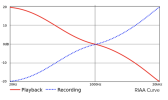we are digressing rather spectacularly here - but hey, why not

The moot point here being this :
- Your low grade device running on super noisy power can still calculate your precise position on a body as large as the earth
- And it does this simply by factoring in the ultra miniscule difference of the time that it takes for a few signals to reach you from their respective satellites
- In other words, it is multilaterating on the basis of the time stamp differences of very precise signals reaching you at the speed of
light - from objects that are barely a few thousand kms apart
So if could posit that the precision of these digital signals could be easily altered by
electrical nasties (I love this phrase) either in terms of accuracy or time drift.
And thus pretty much nothing based on digital signalling would work today, let along something that is working at the level of extreme precision required for this example.
After all, the clean , precise unaltered signal from the
transport (satellite) is going for processing into the nasty cheap noisy phone on planet earth for the final output -
and thus should be subject to
time domain drift or
jitter or corrupting
noise from the
electrical nasties while passing through the
output chain that sits on a Micromax device charging on the alternator of a Bajaj Auto Tempo, isn’t it?



